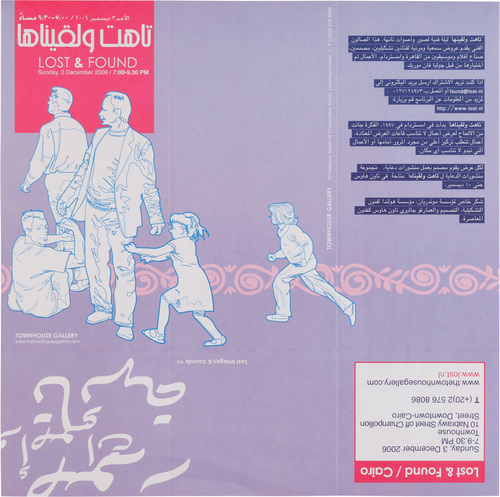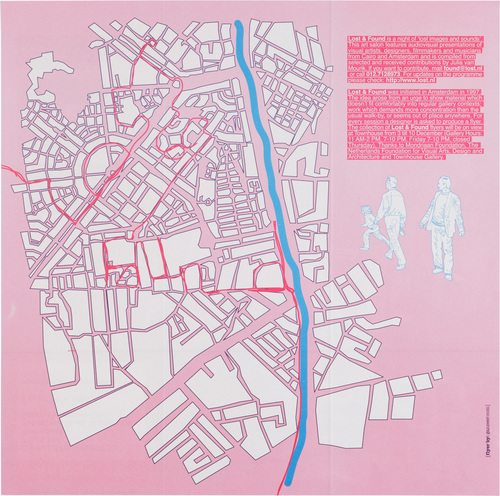Van Mourik's use of the words 'high and low art' prompted a lively debate on what qualifies as high and low art, and who is entitled to judge art.
'Lost and Found' kicked off in the Netherlands in 1997. It seeks to "show material which doesn't fit comfortably into regular gallery contexts; work which demands more concentration than the usual walk-by, or seems out of place anywhere," said the organization's web site.
The Townhouse version showcased a variety of film work, photographs and videos by European and Egyptian artists.
In the shabby hipster-chic of Townhouses marble floors, vaulted ceilings and peeling paint, this show seemed particularly true to its title, as much of the work could be called either 'lost' or 'found.'
Heba Farid 'found' her family's 'lost' heritage through documenting the art of her great-grandmother, Na'ima Al-Misriyya "a forgotten chanteuse from the roaring twenties," as the Townhouse proprietors dubbed her.
Through old photographs and faded phonograph recordings that her family had classified as "junk" and relegated to the attic, Farid's computer presentation pieces together an image of her great-grandmother's life and the artistic culture of the Middle East during the early twentieth century.
Visiting Dutch artist Misha de Ridder is still trying to find the focus of his series of photographs of Cairo as it changes in one afternoon's gradual sunset. Starting at the pyramids outside Cairo, his work spirals inward through the brick tenements of Giza and posh hotels of Garden City, finally ending up downtown. With bright colors and crisp edges, he manages to capture a surprisingly sharp image of Cairo, more vivid than what most of us see through the smog and traffic.
'Lost and Found' is all about interactions between viewers and artists. The atmosphere of the show was casual and discussion-oriented, with Van Mourik and the artists pausing to take questions between presentations. People of all ages and nationalities, teens to late-seventies, Egyptian, Dutch, and British, paid careful attention to the show.
This exhibit was a rare opportunity for an audience to question and shape the art as they viewed it. It will be interesting to look at these artists again in a few years and see whether they will integrate the 'Lost and Found' discussions and suggestions into their work.
For each 'Lost and Found' show, artists make flyers. Though the work will not be shown again, the collection of flyers from various 'Lost and Found' events around the world will be on display at the Townhouse until Jan. 5.
International Herald Tribune – The Daily Star Egypt, 7 december 2006

